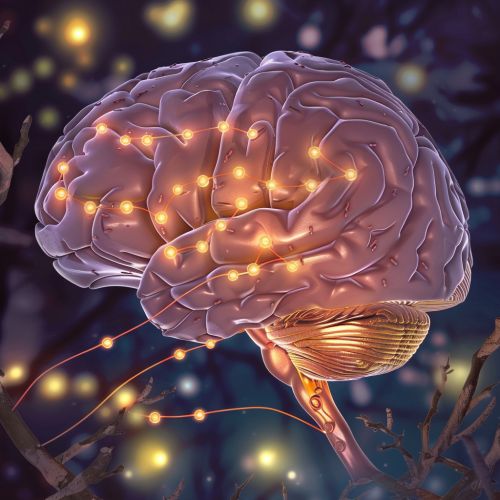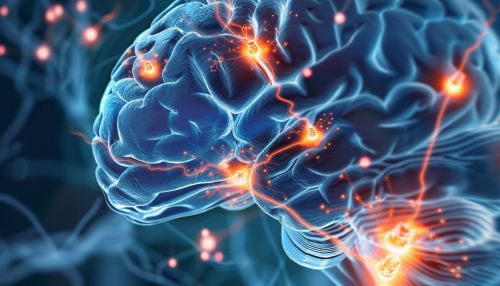Dynorphins
Overview
Dynorphins are a class of opioid peptides that arise from the precursor protein prodynorphin. These peptides are primarily involved in modulating pain, stress, and emotional responses. Dynorphins exert their effects by binding to the kappa-opioid receptor (KOR), which is one of the four main types of opioid receptors. The interaction between dynorphins and KORs plays a significant role in various physiological and pathological processes.
Biochemical Structure and Synthesis
Dynorphins are derived from the precursor protein prodynorphin, which is encoded by the PDYN gene. Prodynorphin undergoes proteolytic cleavage to produce several active peptides, including dynorphin A, dynorphin B, and α-neoendorphin. These peptides share a common N-terminal sequence but differ in their C-terminal regions, which contributes to their varying affinities and specificities for the kappa-opioid receptor.
Prodynorphin Gene
The PDYN gene is located on chromosome 20 in humans. It consists of four exons and three introns, and its expression is regulated by various transcription factors and epigenetic mechanisms. The gene's promoter region contains binding sites for transcription factors such as AP-1 and NF-κB, which can be activated by stress and inflammatory signals.
Mechanism of Action
Dynorphins exert their effects primarily through the kappa-opioid receptor (KOR), a G-protein coupled receptor (GPCR). Upon binding to KOR, dynorphins induce a conformational change in the receptor, leading to the activation of intracellular signaling pathways. These pathways include the inhibition of adenylate cyclase, reduction of cyclic AMP (cAMP) levels, and activation of mitogen-activated protein kinases (MAPKs).
Kappa-Opioid Receptor
The kappa-opioid receptor is one of the four main opioid receptors, alongside the mu-opioid receptor (MOR), delta-opioid receptor (DOR), and the nociceptin/orphanin FQ receptor (NOP). KORs are widely distributed in the central nervous system (CNS), particularly in regions such as the hypothalamus, amygdala, and spinal cord. Activation of KORs by dynorphins can lead to analgesia, dysphoria, and modulation of stress responses.


Physiological Roles
Dynorphins play a crucial role in various physiological processes, including pain modulation, stress response, and emotional regulation. They are also involved in the regulation of appetite, circadian rhythms, and neuroendocrine functions.
Pain Modulation
Dynorphins are potent modulators of pain and are involved in both the enhancement and inhibition of pain signals. In the spinal cord, dynorphins can inhibit the release of neurotransmitters such as substance P and glutamate, which are involved in the transmission of pain signals. However, in certain conditions, dynorphins can also enhance pain perception by activating excitatory pathways.
Stress Response
The release of dynorphins is significantly increased during stress, and they play a critical role in the body's response to stressors. Dynorphins can modulate the hypothalamic-pituitary-adrenal (HPA) axis, leading to the release of cortisol and other stress hormones. This modulation helps the body to adapt to stress but can also contribute to stress-related disorders when dysregulated.
Emotional Regulation
Dynorphins are involved in the regulation of emotions, particularly in the context of negative emotional states such as anxiety and depression. Activation of KORs by dynorphins can induce dysphoria and anhedonia, which are common symptoms of depression. This has led to the investigation of KOR antagonists as potential therapeutic agents for mood disorders.
Pathological Implications
Dysregulation of dynorphin signaling has been implicated in various pathological conditions, including chronic pain, addiction, and mood disorders.
Chronic Pain
In chronic pain conditions, the expression of dynorphins and KORs is often upregulated, leading to enhanced pain perception and reduced efficacy of analgesic treatments. This upregulation can result from prolonged inflammation, nerve injury, or other chronic pain states.
Addiction
Dynorphins play a complex role in addiction, particularly in the context of opioid and alcohol dependence. Activation of KORs by dynorphins can counteract the rewarding effects of drugs of abuse, leading to a negative emotional state that can drive continued drug use. Conversely, KOR antagonists have shown promise in reducing drug-seeking behavior and relapse.
Mood Disorders
The dysphoric effects of dynorphins have been linked to the development of mood disorders such as depression and anxiety. Elevated levels of dynorphins and increased KOR activity have been observed in individuals with these conditions, suggesting that targeting the dynorphin-KOR system could be a potential therapeutic strategy.
Therapeutic Potential
Given the involvement of dynorphins in various physiological and pathological processes, there is significant interest in developing therapeutic agents that target the dynorphin-KOR system.
Kappa-Opioid Receptor Antagonists
KOR antagonists have shown promise in preclinical and clinical studies for the treatment of mood disorders, addiction, and chronic pain. These antagonists can block the dysphoric and pain-enhancing effects of dynorphins, providing relief from symptoms. However, the development of KOR antagonists has been challenging due to issues with selectivity and side effects.
Dynorphin Analogues
Researchers are also exploring the development of dynorphin analogues that can selectively modulate KOR activity. These analogues aim to retain the beneficial effects of dynorphins, such as analgesia, while minimizing adverse effects like dysphoria.
Conclusion
Dynorphins are a critical component of the endogenous opioid system, with significant roles in pain modulation, stress response, and emotional regulation. Their interaction with the kappa-opioid receptor is a key mechanism underlying these effects. Dysregulation of dynorphin signaling is implicated in various pathological conditions, making the dynorphin-KOR system a promising target for therapeutic intervention.
